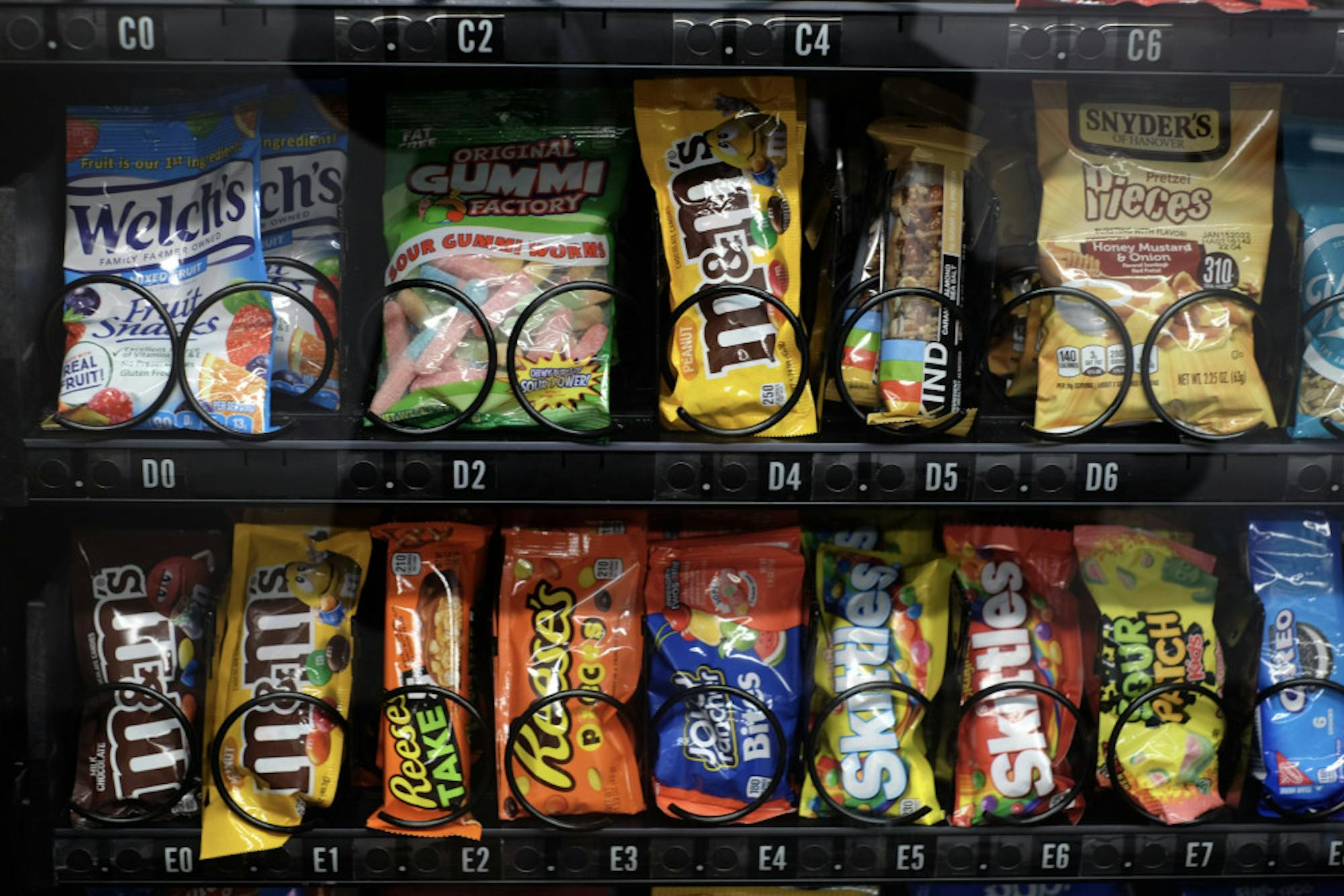As smartphones, online shopping and cryptocurrency have become more prevalent in the past 20 years, so too have ultraprocessed foods, which make up the majority of youth diets. The percentage of child and adolescent diets composed of ultraprocessed foods — those made with refined ingredients and additives — hasincreased from 61% to 67% in the past 20 years, according to a recent Friedman School of Nutrition Science and Policy study published in the Journal of the American Medical Association. The findings may have implications for combating the development of ultraprocessed food-related disease in adulthood.
Ultraprocessed foods are typically made with refined or extracted ingredients, which contain additives that are often high in added sugar, trans-fat, sodium and refined starch. At the same time, these types of foods frequently contain very little protein or fiber. Studies have shown that eating ultraprocessed foods can lead to obesity and other risk factors in children and adults. In particular, some have been linked to cardiovascular disease, some cancers and overall mortality in adults.
The study analyzed the diets of over 33,000 children ages 2–19 between 1999 and 2018 using the National Health and Nutrition Examination Survey. It found that ready-to-eat dishes — such as microwavable dinners — are the main culprit, accounting for a 9% increase in calories from ultraprocessed foods. Sweet snacks also contributed substantially to calorie intake, the researchers reported in their August study.
Lu Wang, an epidemiologist at the Friedman School and first author of the study, said that ultraprocessed foods now comprise the majority of the total energy consumed by children and adolescents in the U.S.
“We came up with this topic because ultraprocessed food is becoming very popular in our children's diet,” Fang Fang Zhang, an epidemiologist at the Friedman School who co-authored the study, said. “Given how popular it is in our diet, and the increasing number of studies showing our potential harms for consuming high amounts of it, we wanted to look at the trends, especially for U.S. children.”
The researchers also collected data on age, sex, race, parental education level and family income. They found that the percentage of ultraprocessed foods increased by 10.3% among non-Hispanic Black Americans and 7.6% among Mexican Americans, compared to 5.2% among non-Hispanic white people.
Zhang said that this increase is likely due to targeted advertising of ultraprocessed foods toward Black youth, and that the prevalence of home cooking among Mexican American families may explain their lower levels of ultraprocessed food consumption.
The consumption of sugar-sweetened beverages decreased by 51% between 1999 and 2018, largely due to public awareness campaigns and policy efforts about the potential harms of these beverages, the study found. Some cities have implemented taxes on sugar-sweetened beverages to further decrease consumption.
Connie Weaver, a nutritionist at Purdue University, believes that exposure to whole foods — those without additives and artificial substances, such as fresh fruits and vegetables — in schools is the best way to improve child and adolescent diets.
“You need exposure: cooking classes, field trips or anything to help people understand where food comes from [and] that whole foods are full of nutrients that are good for you,” Weaver said. “We cut out a lot of those kinds of classes and curriculum.”
Zhang added that larger-scale policy efforts could also reduce ultraprocessed food consumption.
“We do need some, I would say, high-level efforts, potentially some policy effort to try to reduce the consumption as a whole,” Zhang said. “Those could be the USDA policies or the local policies to try to restrict the spread of ultraprocessed foods in the school environment.”
Wang identified limitations to the classification and research of ultraprocessed foods, which could necessitate further research on the topic. Scientists have struggled to explain the impact of processing on foods and distinguish it from other measures of food quality.
“The study was not able to differentiate whether the effect was driven by the product quality or whether it is the processing, so we need to design some measurement to differentiate these two aspects,” Wang said.
Weaver agreed, adding that the description of ultraprocessed foods may be too broad.
“It really isn’t about the degree of processing, but the formula,” Weaver wrote in a follow-up email to the Daily. “There are highly processed foods that are recommended as part of a healthy diet such as yogurt, olive oil, whole grain breads and cereals, and wine.”
Zhang also said that researchers are still unsure what may lead certain ultraprocessed foods to negatively impact health.
“There are some hypotheses that the ultraprocessing itself changes the structure of the foods or taste of the foods, so people may consume them quicker,” Zhang said. “I think it would be very good to understand the biological mechanisms [about] why ultraprocessed food contributes to weight gain and also cancer.”
Weaver, who was not surprised by these findings, said that researchers, educators and caretakers should pay more attention to child and adolescent diets.
“It's just abominable that we've let ourselves as caretakers of future generations eat like that,” Weaver said. “I think people just don't appreciate [that] your precursors for chronic disease are starting in childhood and adolescence, you're adopting lifelong habits for the most part, and so we should pick up the cause for improving diet.”






